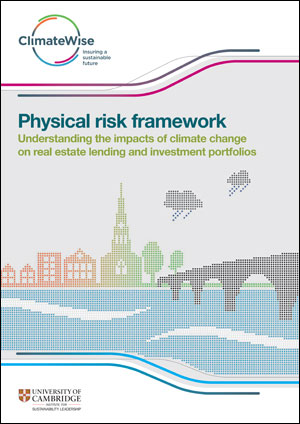22 February 2019 – The ClimateWise Physical Risk Framework demonstrates how the expertise and tools of the insurance industry can support other parts of the financial system to understand their physical risk exposure.
 Physical risks– such as rising temperatures, flooding, drought, sea level rise and water scarcity - are already being felt globally, and the associated financial losses (both insured and uninsured) have significantly increased in recent years.
Physical risks– such as rising temperatures, flooding, drought, sea level rise and water scarcity - are already being felt globally, and the associated financial losses (both insured and uninsured) have significantly increased in recent years.
The ClimateWise Insurance Advisory Council has developed the ClimateWise Physical Risk Framework, which demonstrates how the risk analysis tools of the insurance industry can inform other parts of the financial sector and demonstrate the role of adaptation in mitigating these risks. The framework offers real estate investors and lenders a means of understanding the potential physical risks of climate change on their portfolios.
Physical risk exposure is likely to vary geographically both within and between portfolios but the impacts are significant across the board. For example, a 4°C warming scenario could see average annual losses caused by floods to UK mortgages more than double. While insurance will play an important role in managing the impact of climate change, the increase in risk could, in the most severe cases, make premiums unaffordable.
The analysis carried out for this report uses ETH Zurich’s CLIMADA model and The Future Flood Explorer developed by Sayers and Partners.
About
ClimateWise is a global network of leading insurers, reinsurers, brokers and industry service providers who share a commitment to reduce the impact of climate change on the insurance industry and society. It is a voluntary initiative driven directly by its members and facilitated by the University of Cambridge Institute for Sustainability Leadership (CISL).
Citing this report
Please refer to this report as: Cambridge Institute for Sustainability Leadership (CISL). (2019, February). Physical risk framework: Understanding the impacts of climate change on real estate lending and investment portfolios. Cambridge, UK: Cambridge Institute for Sustainability Leadership.



